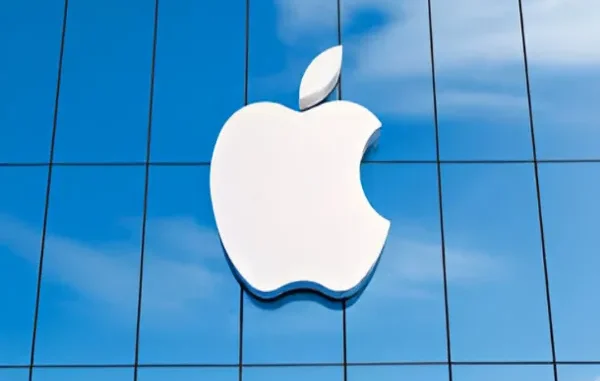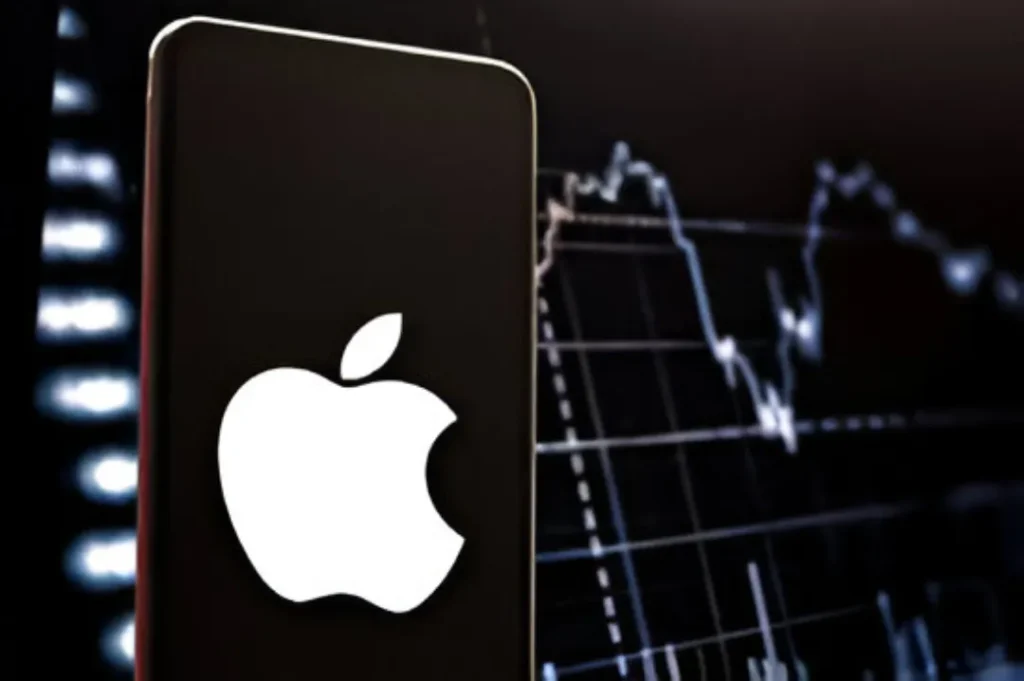
Apple Inc. (NASDAQ: AAPL) has long been a cornerstone of the technology sector, but recent developments suggest that the company may be on the verge of a significant transformation. Analysts are closely monitoring several key factors that could influence Apple’s trajectory in the coming months.
Strong Financial Performance
Apple’s Q3 2024 earnings report exceeded expectations, with revenue reaching $85.8 billion—a 5% increase year-over-year. Net income stood at $21.45 billion, translating to earnings per share (EPS) of $1.40. Despite a slight decline in iPhone sales, other segments like iPad and Services showed robust growth.
Looking ahead, analysts forecast a 5.3% annual revenue growth and an 8.5% increase in earnings per share over the next three years . The average 12-month price target for AAPL is approximately $237, with estimates ranging from $160 to $300.
AI Strategy Under Scrutiny

While Apple’s financials are strong, its approach to artificial intelligence (AI) has raised concerns among investors. Unlike competitors like Google and Meta, Apple has been relatively quiet on the AI front. The company has delayed the release of its next-generation Siri assistant until 2026, leading some analysts to question whether Apple is falling behind in the AI race.
However, Apple maintains that its AI strategy focuses on user privacy and seamless integration across its ecosystem. The company’s services division, now contributing nearly one-third of revenue, may leverage third-party AI technologies rather than developing proprietary solutions. If Apple delivers meaningful AI features by mid-2026, it could regain momentum in this critical area.
Upcoming Product Launches
The anticipated iPhone 17 launch on September 9, 2025, has generated significant buzz. However, some analysts caution that the new iPhone series may feature only minor upgrades, with the main highlight being a superthin iPhone Air model. Historically, such product announcements have led to short-term stock declines, often referred to as “sell-the-news” events.
Despite this, the event could also unveil new smartwatches and AirPods, potentially boosting investor sentiment. Analysts remain cautiously optimistic, with price targets ranging from $210 to $270.
Analyst Consensus and Long-Term Outlook
The consensus among 28 analysts covering Apple stock is a “Buy” rating, with an average price target of $235.79—a modest 1.57% increase from the current price . However, some analysts are more bullish, projecting a price target of up to $300.
Looking further ahead, some forecasts suggest that Apple’s stock could reach $410 by 2030, driven by sustained growth in services and potential advancements in AI.
AAPL is Attracting Attention
Apple Inc. (NASDAQ: AAPL) has recently become one of the most searched stocks on Zacks.com, drawing attention from investors eager to understand its potential. Over the past month, AAPL shares have returned -7.1%, underperforming the Zacks S&P 500 composite’s +5.2% change. Meanwhile, its industry peers in the Zacks Computer – Micro Computers sector have seen a -6.1% decline. This has raised questions about where the stock may be headed in the near term.
One of the most important factors influencing Apple’s stock is earnings estimate revisions. Zacks prioritizes changes in a company’s projected earnings because future earnings largely determine the fair value of the stock. For the current quarter, Apple is expected to report earnings of $1.41 per share, a modest +0.7% increase from the same quarter last year. The consensus estimate has shifted slightly by -1% over the past 30 days. Looking at the fiscal year, projected earnings stand at $7.11 for the current year (+5.3% from prior) and $7.67 for the next year (+7.9% from last year), with minor downward revisions over the last month.
Apple’s revenue growth also plays a key role in its outlook. The company’s consensus sales estimate for the current quarter is $88.31 billion (+3% YoY), while full-year estimates are $404.19 billion and $419.36 billion for the current and next fiscal years, showing steady increases of +3.4% and +3.8%, respectively. The most recent reported quarter exceeded expectations, with $95.36 billion in revenue (+5.1% YoY) and EPS of $1.65 compared to $1.53 a year ago, marking positive surprises over both revenue (+1.16%) and EPS (+2.48%). Apple has consistently beaten consensus EPS estimates in each of the last four quarters.
Valuation is another critical consideration. Using the Zacks Value Style Score, Apple receives a grade of D, indicating it is trading at a premium compared to its peers. Comparing P/E, P/S, and P/CF ratios both historically and relative to competitors suggests that AAPL’s stock is currently overvalued, which may influence investment decisions for those seeking value opportunities.
Finally, Apple’s Zacks Rank of #3 (Hold) reflects that while the stock is trending in investor searches, its near-term performance is likely to align with the broader market rather than significantly outperform it. While media hype and rumors can influence short-term movements, fundamental metrics such as earnings growth, revenue, and valuation remain the key determinants of long-term performance.
Investors keeping a close eye on Apple should consider both the market buzz and the underlying financial fundamentals to make informed decisions. With strong earnings and expanding opportunities in AI, IoT, and other technologies, Apple continues to be a company worth monitoring—but the stock may not see explosive growth immediately.
Apple Revenue
Apple Inc. (NASDAQ: AAPL) has a significant presence in international markets, and its performance abroad provides key insights into the company’s financial stability and growth potential. In the quarter ending June 2025, Apple reported total revenue of $94.04 billion, a 9.6% increase year-over-year, highlighting the importance of its global operations.
Breaking down international revenue, Greater China contributed $15.37 billion (16.3% of total revenue), slightly above Wall Street estimates. Europe generated $24.01 billion (25.5%), exceeding expectations by over 5%. Japan added $5.78 billion (6.2%), and the Rest of Asia Pacific contributed $7.67 billion (8.2%), which represented a substantial 15.6% surprise compared to analyst forecasts. These results demonstrate that Apple continues to leverage international markets effectively, despite regional fluctuations and challenges.
Looking forward, analysts project revenues of $98.86 billion for the current fiscal quarter, with contributions from Greater China at $15.43 billion, Europe $24.87 billion, Japan $6.3 billion, and the Rest of Asia Pacific $7.32 billion. Full-year forecasts indicate total revenues of $405.08 billion, with international markets accounting for a significant share: Greater China 16.1%, Europe 26.2%, Japan 7%, and Rest of Asia Pacific 7.8%.
While international markets offer growth opportunities and a hedge against domestic economic downturns, Apple also faces risks from currency fluctuations, geopolitical tensions, and varying market dynamics. Monitoring these trends is critical for investors seeking to understand Apple’s resilience and its potential trajectory in the coming years.
Apple currently holds a Zacks Rank #3 (Hold), suggesting its near-term performance may align with broader market trends. As global revenue streams continue to evolve, the company’s strategic positioning in international markets remains a vital factor for analysts and investors alike.
Warren Buffett Sells $4 Billion of Apple to Buy UnitedHealth Group: What Investors Need to Know

Warren Buffett, the legendary “Oracle of Omaha,” recently made headlines by selling approximately $4 billion of Apple (AAPL) stock in Q2 2025. From the proceeds, he allocated around $1.5 billion to purchase shares of UnitedHealth Group (UNH), a beaten-down but fundamentally strong blue-chip stock.
Buffett sold roughly 20 million Apple shares at an average price of $202 per share, trimming about 6.7% of Berkshire Hathaway’s stake. The investment in UnitedHealth involved acquiring approximately 5.04 million shares, valued at $1.57 billion by the end of the quarter. This strategic swap essentially exchanged Apple’s tech exposure for a healthcare play, highlighting Buffett’s preference for stable, undervalued companies in his portfolio.
While Apple remains a long-term favorite with a strong ecosystem and potential growth drivers like foldable iPhones and AI acquisitions, UnitedHealth Group offers near-term value. The stock’s low price-to-earnings ratio and manageable risk factors, including anticipated premium increases and resolution of DOJ inquiries, make it a safer, potentially lucrative short-term investment.
Buffett’s move underscores the principle of trade-offs in investing: selling a high-performing stock to capture opportunity in another sector. For investors, the lesson is clear—balancing growth potential with risk management and valuation is critical. While Apple continues to be a cornerstone of long-term wealth building, UnitedHealth represents a smart, strategic opportunity in the near term.
Why Apple Is Falling Behind
Despite its massive $3 trillion valuation, Apple (AAPL) is increasingly seen as less dynamic than its FAANG peers. Recent analysis highlights stagnating growth, high price-to-earnings ratios, and an over-reliance on mature product lines like iPhones, iPads, and Macs. While Apple’s services segment—including iCloud, Apple Music, Apple TV+, Apple Pay, and the App Store—shows steady double-digit growth, the company’s core hardware products face saturation and slower demand.
Investors looking for aggressive growth may find Amazon, Google, and Meta (collectively “MAA”) more appealing. These companies are investing heavily in AI, cloud infrastructure, and scalable platforms, leading to double-digit revenue growth and expanding operating margins. In contrast, Apple is constrained by its size and risk aversion; it cannot afford radical product gambles or massive CapEx without unsettling shareholders. Additionally, Apple’s dependence on China for both manufacturing and sales introduces geopolitical and tariff risks that MAA largely avoid.
Ultimately, Apple is transitioning from a growth-focused company to a more value-oriented firm. While its stable services revenue, dividends, and buybacks make it a solid long-term investment, it currently lacks the explosive growth potential of other FAANG stocks, making it less attractive for those seeking high-risk, high-reward opportunities.
Conclusion
Apple stands at a crossroads. While its financial performance remains strong, the company’s approach to AI and upcoming product launches will play a pivotal role in determining its future trajectory. Investors should stay informed about these developments, as they could significantly impact AAPL’s stock performance in the coming months.
People Also Ask
1. Is Apple stock expected to rise soon?
Analysts are cautiously optimistic. While AAPL has strong financials, factors like AI strategy and upcoming product launches will influence short-term performance.
2. What are the biggest risks for AAPL investors?
Key risks include delayed AI initiatives, minor iPhone upgrades, and potential market sell-offs after product announcements.
3. How did Apple perform in its latest earnings report?
Apple reported $85.8 billion in revenue for Q3 2024, with a net income of $21.45 billion and EPS of $1.40, exceeding analysts’ expectations.
4. What do analysts say about Apple’s long-term outlook?
Some forecasts project AAPL could reach $410 by 2030, driven by growth in services, hardware, and potential AI integration.
5. How does Apple compare to other tech giants in AI?
Apple has been quieter than competitors like Google and Meta in AI development. Its strategy focuses on privacy and integration rather than public AI breakthroughs.
6. What is the consensus rating for Apple stock?
Among 28 analysts covering AAPL, the consensus rating is “Buy,” with an average 12-month price target around $235–$237.
7. Which Apple products could impact stock performance next?
The upcoming iPhone 17, superthin iPhone Air, smartwatches, and AirPods are the primary products analysts are watching for potential market reactions.
Leave a Reply